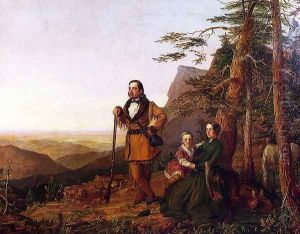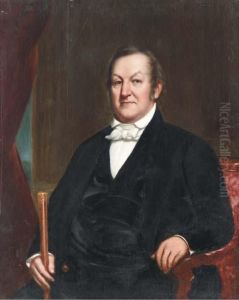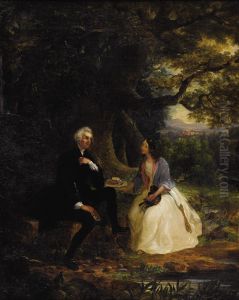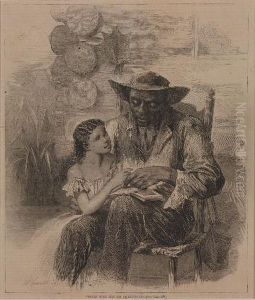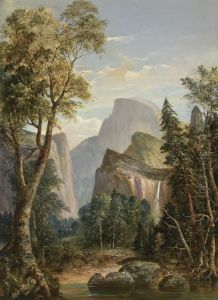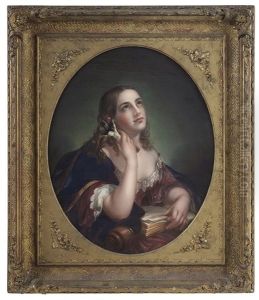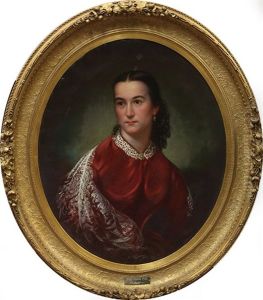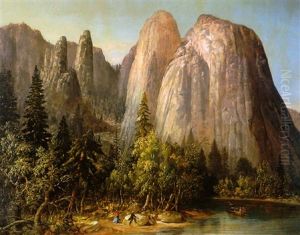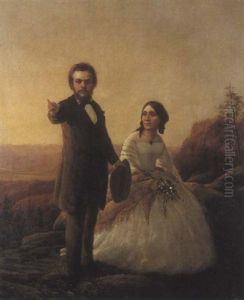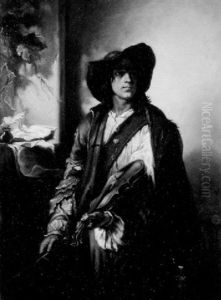William Smith Jewett Paintings
William Smith Jewett, born in 1812 in South Poultney, Vermont, was a distinguished American painter known for his contributions to portrait and landscape painting during the 19th century. Jewett's early life in rural Vermont played a significant role in shaping his artistic sensibilities, embedding in him a profound appreciation for the natural landscape that would later be evident in his works. Despite the lack of formal art education in his early years, Jewett's innate talent and determination propelled him towards pursuing a career in the arts.
In pursuit of honing his skills, Jewett relocated to New York City, a burgeoning hub for artists in the United States during that period. There, he apprenticed under the notable portraitist Samuel F.B. Morse, who was not only a prominent painter but would later invent the telegraph. This mentorship was pivotal in Jewett's development as an artist, grounding him in the techniques of portraiture that would come to define much of his career.
Jewett's work gained recognition for its meticulous attention to detail and its ability to capture the essence of his subjects. His portraits, often of prominent figures of his time, were celebrated for their lifelike quality and the depth of character they portrayed. Beyond portraits, Jewett also explored landscape painting, where he applied his refined techniques to depict the American countryside, capturing the serene beauty of its expanses.
Throughout his career, Jewett traveled extensively, drawing inspiration from various locales and further enriching his visual repertoire. His travels and the diverse scenery he encountered are reflected in the versatility of his landscape works, which range from the pastoral to the sublime. Despite the evolution of his style over the years, Jewett remained faithful to the representational approach, eschewing the emerging abstract trends of the late 19th century.
William Smith Jewett's contributions to American art were recognized during his lifetime, and he enjoyed a successful career as an artist. He was a member of prestigious art organizations and participated in important exhibitions, establishing himself as a respected figure in the American art scene of the 19th century. Jewett passed away in 1893, leaving behind a legacy of work that continues to be appreciated for its technical skill and its evocative portrayal of 19th-century America. His paintings are held in several esteemed collections and institutions, testament to his enduring impact on American art history.
